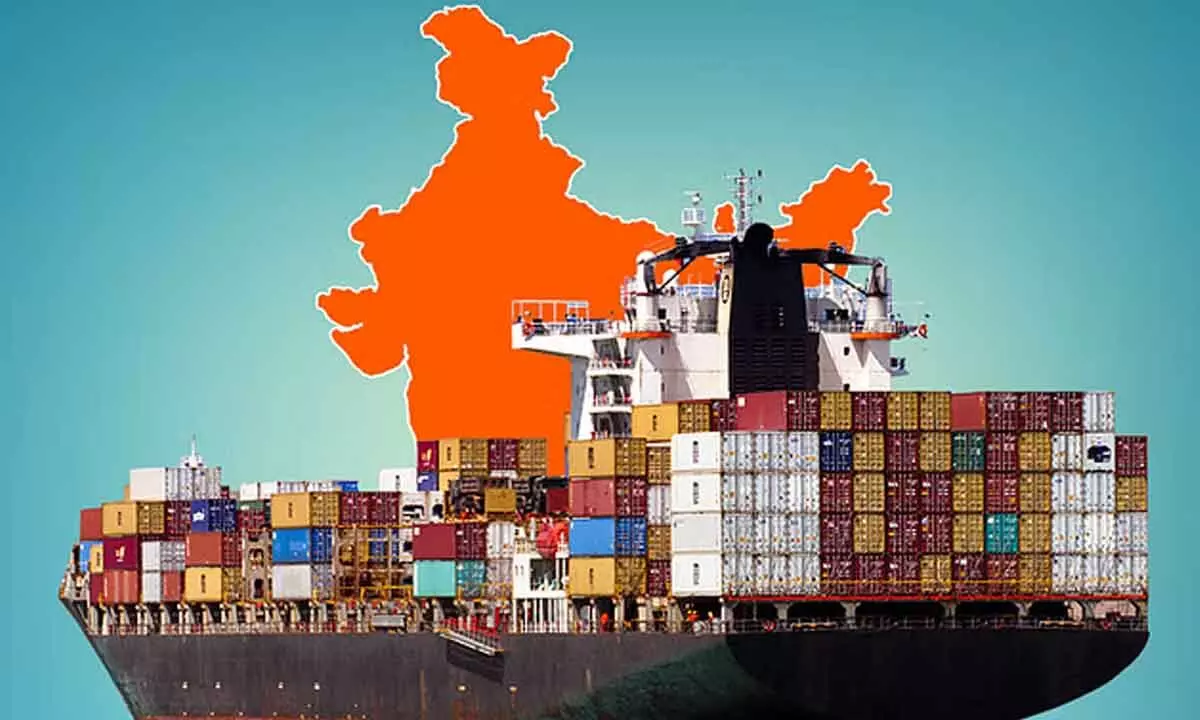India can get competitive edge by boosting merchandise exports
image for illustrative purpose

India’s merchandise exports saw a tepid one per cent rise in April ($34.99 billion). In comparison, services exports in the same month stood at $29.57 billion, which is 14.7 per cent higher than the $25.78 billion in April 2023. Global headwinds are arising from conflicts like in Ukraine and Gaza. However, everything is not so gloomy. In its April 10 forecast, the World Trade Organization (WTO) said, “World merchandise trade volume is expected to grow 2.6 per cent in 2024 and 3.3 per cent in 2025 as demand for traded goods rebounds following a contraction in 2023.” It, however, also went on to underline regional conflicts, geopolitical tensions, and economic policy uncertainties. The president of Federation of Indian Export Organisations (FIEO) Ashwani Kumar also sounds bullish with his take “Starting the new financial year 2024-25 on a positive note… is good sign even during such challenging times.” It may be mentioned that while in April 2024 merchandise exports witnessed only a marginal rise, in March 2024 there was a contraction of 0.67 per cent.
India’s merchandise exports present a smorgasbord of products, including textiles, pharmaceuticals, gems and jewellery and automotive parts. India is keen on emerging as a significant player in the global trade arena even as the Centre is striving to make it a hub of manufacturing of various goods. The ambition is not unrealistic because of several reasons. First, the country has an abundant workforce, including many skilled and semi-skilled people. Second, India boasts of an overwhelming number of people whose English dexterity is quite high; a factor where China is found wanting. Third, India not only has a burgeoning technology sector but also a high number of science and technology experts, fostering innovation and enhancing competitiveness in high-value industries such as IT services and pharmaceuticals. Fourth, the government has come up with policy initiatives aimed at fostering trade like the ‘Make in India’ campaign and production-linked incentives. Fifth, improvements in infrastructure and logistics are helping industry add to its competitive edge. These efforts have streamlined processes, decreased costs and have enhanced the ease of doing business in many respects.
Against this backdrop, India’s trade relationships have evolved in multifarious ways. Merchandise trade with the countries with which India has a free trade agreement (FTA) has shown that imports have grown more than exports. According to think tank Global Trade Research Initiative, while imports from FTA entities rose almost 38 per cent during 2019-24 fiscal years to $187.92 billion, the exports grew just 14.48 per cent to $122.72 billion in 2023-24 from $107.20 billion in 2018-19. But there are divergences. India’s exports to the UAE rose by 18.25 per cent to $35.63 billion in 2023-24 as against $30.13 billion in 2018-19 but imports zoomed 61.21 per cent. On the other hand, the exports to Australia more than doubled to $7.94 billion in 2023-24 from $3.52 billion in 2018-19, while imports from Australia grew 23.06 per cent from $13.13 billion to $16.16 billion in the last fiscal. Policy and decision makers will do well to examine and learn from the FTA experience and other world trade trends so that sustained efforts could be made to enhance competitiveness, diversify export destinations and fortify trade infrastructure.

